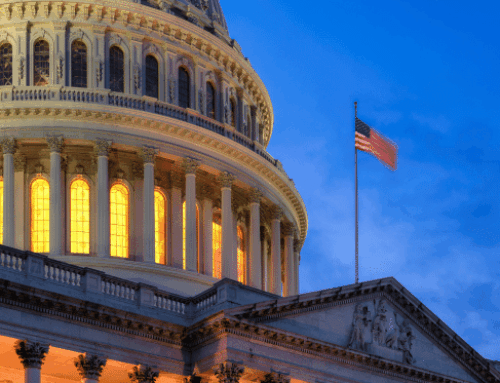Actually, the more common term is “use it or lose it” and you can bet that phrase was used around federal agencies for the last month or so. Much of the cash doled out through discretionary spending expires at the end of the fiscal year. Agencies are loath to leave any money unspent, afraid that doing so will lead budget makers to reduce future funds by that amount. So buy that copier, purchase more pens, award a contract, just spend it before midnight on September 30!
This is not a new phenomenon, and it’s not a Democratic or Republican vice, it’s just a reality of the current system. And it inevitably leads to waste – either outright, because agencies really don’t need what they buy, or because spending is rushed to lower priority, but easier to finish, issues.
To highlight the issue, the Subcommittee on Federal Spending and Emergency Management (part of the Senate Homeland Security and Government Affairs Committee) held a hearing on the subject Wednesday. Experts testified about the hows and whys of use it or lose it and ways to tackle the issue.
The National Bureau of Economic Research has looked into the issue. Spending in the last week of the fiscal year is five times higher than it is the rest of the year. That isn’t necessarily a problem if all of it was worthwhile, but the same NBER study found that the spending is more likely to be of lower quality compared to earlier weeks.
So what to do about it.
 First off, Congress has to look in the mirror. Agencies fear reduced base budgeting in future years if they don’t spend everything in any given year. Obviously if there are consistent overages year after yea, that could signal a problem, but a one year surplus should be examined for the rationale. It may be that a large contract wasn’t ripe until October, some cyclical nature of events reduces needs in certain years, weather affected schedules, or that agencies were just able to implement programs more efficiently than anticipated. Congress, agencies, and the Office of Management and Budget need to examine the reasons behind the extra cash in a program, not just assume one year’s experience automatically indicates next year’s budget needs.
First off, Congress has to look in the mirror. Agencies fear reduced base budgeting in future years if they don’t spend everything in any given year. Obviously if there are consistent overages year after yea, that could signal a problem, but a one year surplus should be examined for the rationale. It may be that a large contract wasn’t ripe until October, some cyclical nature of events reduces needs in certain years, weather affected schedules, or that agencies were just able to implement programs more efficiently than anticipated. Congress, agencies, and the Office of Management and Budget need to examine the reasons behind the extra cash in a program, not just assume one year’s experience automatically indicates next year’s budget needs.
In addition, one of the things that drives late year spending binges are the Continuing Resolutions that are increasingly used to fund federal agencies until late in the year. According to one of the witnesses at Wednesday’s hearing – in the 40 years since the Congressional Budget Act was enacted, there have only been four years where a continuing resolution wasn’t used for at least some portion of the budget. But it’s also not just that there was a CR. In some years, those were only for a few days or a week. But in recent years, they’ve covered up to a full quarter or half a year. That means that agencies have to be prudent as they limp along under the CR, not knowing their final spending allowance, and then rush to spend the new cash (provided on an annual basis) in a short few months before the end of the fiscal year.
Leaving aside the bigger institutional problems, the witnesses pointed to possible ways to deal with the issue. One was the Bonuses for Cost Cutters Act (S. 1378) that the Subcommittee Chairman, Sen. Rand Paul (R-KY) has introduced with Sen. Mark Warner (D-VA). The legislation would enable an agency Inspector General to award agency employees a bonus of up to $10,000 of any truly surplus funds they identify. Of the savings, 90 percent would go to deficit reduction, the remainder would be available for the agency to spend on other priorities. In addition, the IG would have to certify that fulfilling the agency’s mission would not be compromised if the funds were withdrawn. The bonus policy already exists for employees identifying fraud or mismanagement, this simply builds upon it.
Other proposals included limited rollover of agency funds, up to five percent per year to ease the deadline aspect. Only 50 percent of that rollover would be available in a subsequent fiscal year, and all the extra funds would have to be spent within two years. Another recommendation to change agency culture was to give federal managers that return excess funds high performance ratings in fiscal responsibility in their performance evaluations and to give these managers positive public recognition that could be documented in their personnel files.
Is use it or lose it the biggest fiscal problem facing the nation, or a primary driver of our nation’s deficits and debt? No. But tackling these smaller – but very visible and known – issues is a confidence building measure that can lead to bigger solutions. Most importantly, Congress getting the spending bills done on time would go a long way to reduce government dysfunction and disruption and reduce overall spending and waste along the way.








